Identifying Poisonous Mushrooms in Washington State
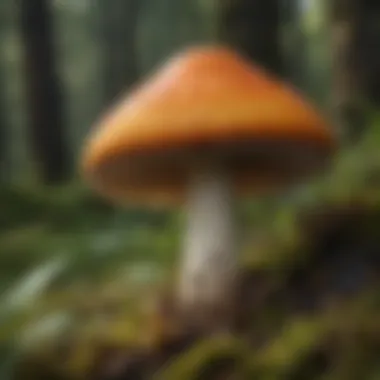
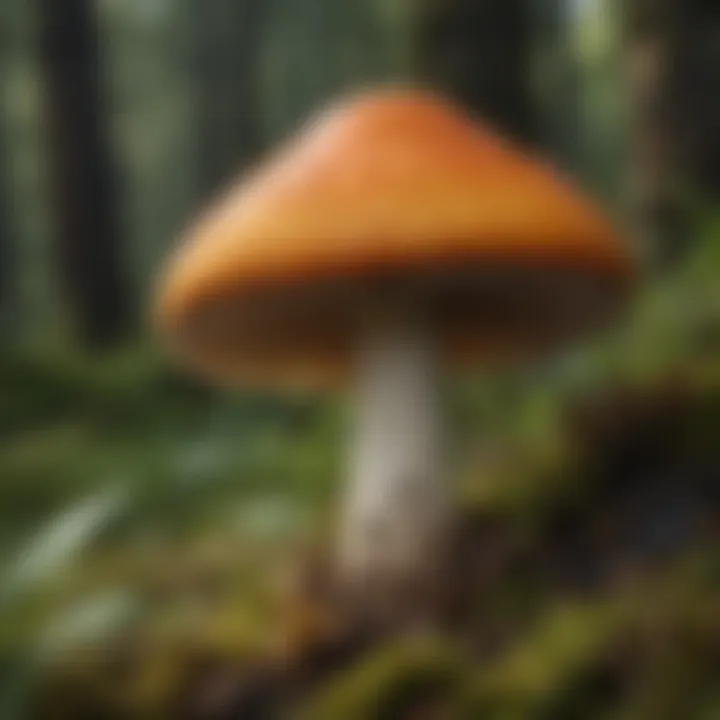
Intro
Mushrooms have long fascinated humanity, both for their culinary potential and their role in ecosystems. Particularly in Washington State, a verdant paradise teeming with diverse flora, mushrooms stand out. Among them, however, lurk varieties that promise not just an unusual culinary experience but also significant health risks. Understanding these poisonous mushrooms is not merely for culinary experts, but for anyone who enjoys the great outdoors. Whether you are an experienced forager or simply someone who enjoys exploring forest trails, this guide will shed light on the varieties, characteristics, and ecological roles of these fungi.
The state is home to several species of mushrooms that can be harmful if consumed. Knowing the traits of these fungi will help you avoid potentially dangerous encounters. Additionally, this article emphasizes safe foraging methods and the ecological significance of mushrooms, underscoring their intricate relationships with the environment.
As we journey through the world of mushrooms, we will unpack crucial information that equips you with the knowledge to appreciate these natural wonders without putting your health at risk. With that in mind, let's begin by discussing the striking variety of species found in Washington's woodlands.
Evergreen Trees Species
Although not the direct focus of mushroom exploration, understanding the landscape in which these fungi thrive is essential. Evergreens play a pivotal role in maintaining ecosystems that support fungal growth.
Types of Evergreen Trees
In Washington State, various evergreen trees provide the perfect backdrop for mushroom growth. Among them, the Douglas Fir and Sitka Spruce stand out not only due to their majestic presence but also because of their relationship with fungi. These trees are often found in damp, shaded areas, which serve as ideal habitats for numerous mushroom species. The dense foliage of evergreens creates microenvironments that offer moisture and protection, crucial for mushrooms to flourish.
- Douglas Fir: Known for its tall stature and conical form, this tree provides a habitat for many species of fungi, some of which may be toxic.
- Western Hemlock: Another prominent tree, its needle-like leaves add to the forest’s diversity, supporting various mushroom types.
- Pine Trees: These hardy trees thrive on dry ridges and are home to species like the Death Cap, one of the most dangerous mushrooms.
Ecological Significance
The ecological significance of these evergreens can't be overstated. They not only sustain wildlife but also contribute to carbon storage and soil health, creating environments conducive to mushroom growth. Fungi and trees share a symbiotic relationship where mushrooms break down organic matter, enriching the soil and promoting healthy tree growth. This can lead to further diversity of mushroom species, not all of which are beneficial. Thus, understanding these links is crucial for anyone venturing into the woods.
Conservation Practices
As urbanization increases and forests are depleted, conservation efforts become pivotal. Practices that protect evergreen trees directly influence mushroom habitats. Organizations like the Washington Department of Natural Resources spearhead initiatives to safeguard these forests, ensuring they remain not just a resource for timber but a vibrant ecosystem for all living organisms, including poisonous mushrooms. Sustainable practices focus on preserving tree age diversity and controlling invasive species, which ultimately helps maintain the delicate balance of life in these forests.
"Healthy forests are the backbone of a thriving ecosystem, home to countless species that all play a role in the natural world."
In the context of poisonous mushrooms, understanding the evergreen landscape can serve as a foundational element in our journey toward safe foraging. After all, it’s in these complex ecosystems that the risks and rewards of mushroom foraging reside.
Next, we will delve deeper into the specific varieties of poisonous mushrooms found in Washington State and the precautions necessary to navigate the risks associated with foraging.
Prelims to Poisonous Mushrooms
Poisonous mushrooms are not just a whimsical topic; they hold significant importance in understanding forest ecosystems and human safety. In Washington State, a region abundant in diverse fungi, it's essential for both residents and outdoor enthusiasts to grasp the implications of encountering such species. With the state's varied climate and rich forest habitats, knowing what's safe to forage versus what can harm is paramount.
Understanding Mushroom Toxicity
Mushroom toxicity can be bewildering, as many species possess traits that disguise their true nature. Toxic mushrooms can be misidentified easily by even seasoned foragers, leading to grave consequences.
Taking a look at the chemical compounds in these fungi, many release dangerous toxins that affect human health. For instance, Amanita phalloides, known as the Death Cap, contains amatoxins—potent substances that can wreak havoc on the liver.
"Mushrooms, in their complexity, can offer both nutrition and danger; understanding the balance is crucial for safe foraging."
It’s not just the immediate effects of toxins we must consider. Symptoms of poisoning can range from gastrointestinal distress to severe liver damage, depending on the species ingested and the quantity consumed. In cases of severe toxicity, even prompt medical intervention may not reverse the damage, leading to long-term health issues or even fatalities.
Understanding the significance of proper identification is another crucial aspect. All mushroom hunters, professionals included, must commit to rigorous education about local species. Recognizing characteristics such as cap shape, gill structure, and coloration can be the difference between a delightful feast and an emergency room visit.
The exploration of mushroom toxicity serves not only to protect us. It opens avenues for understanding the ecological roles these fungi play, from nutrient cycling to providing food for wildlife. Awareness of these factors enhances our appreciation for the biodiversity in Washington’s forests and the importance of respecting their complexity.
Mushroom Identification Basics
Mushroom identification forms the cornerstone of safely foraging and understanding the vast variety of fungi that populate Washington State. Knowledge in this area is not merely an academic exercise; it has real-world implications that can mean the difference between enjoying a forest-based adventure or facing serious health risks. Recognizing the shape, color, and ecological roles of different mushrooms can empower individuals to appreciate these organisms fully and respect their potential dangers.
Characteristics of Fungi
Fungi, including mushrooms, display a remarkable diversity that is more than skin deep. At a basic level, mushrooms are the reproductive structures of fungi, which exist primarily underground as a network of mycelium. This mycelial web plays a crucial role in nutrient cycling within ecosystems. When observing mushrooms, several key characteristics should be noted:
- Morphology: The general shape (cap, stem, gills, etc.) can greatly assist in identification. Many edible varieties, like the charmingly ubiquitous chanterelle, flaunt distinct features that set them apart from their poisonous counterparts.
- Coloration: Colors can hint at a mushroom's potential toxicity, although this is not a foolproof method. For instance, the vibrant red of the Amanita muscaria stands out starkly in the underbrush, but its flashy exterior belies its toxic nature.
- Habitat: Mushroom types are often bound to specific environmental conditions. Washington's varied climates foster species that thrive in unique niches, such as moist forest floors or sandy soils.
Understanding these characteristics fosters not only safer foraging practices but also enriches one’s appreciation for biodiversity within forest ecosystems.
Distinguishing Features of Poisonous Varieties
Identifying poisonous mushrooms is both an art and a science, requiring keen observation and a good deal of caution. There are several distinguishing features to keep in mind:
- Gills vs. Pores: Many poisonous mushrooms, like the Death Cap, have gills that are not attached to the stem. In contrast, other species might exhibit pores instead of gills, which can serve as a helpful distinguishing feature.
- Spore Print: Taking a spore print involves placing a cap flat against a piece of paper. The color of the resulting print can be an invaluable clue in identification. Some toxic mushrooms like the Inocybe species can yield a dark brown or purple-brown print, which is vital to note.
- Smell: Certain mushrooms, such as the morel, have a pleasant odor, while others can emit unpleasant or chemically reminiscent smells. That said, relying solely on smell can be misleading, as some poisonous types may not have a distasteful scent.
Acquiring a deep understanding of these details leads to more confident identification—ultimately reducing the risk of mistakenly consuming something hazardous. For anyone venturing into Washington's rich mushroom habitat, education and observation are key to thriving safely amidst the fungal bounty.
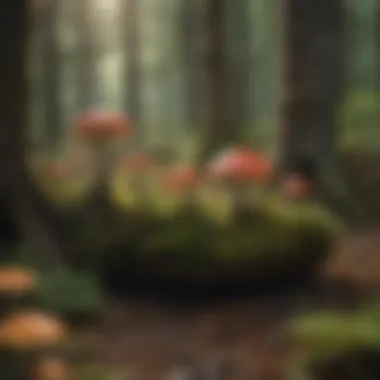
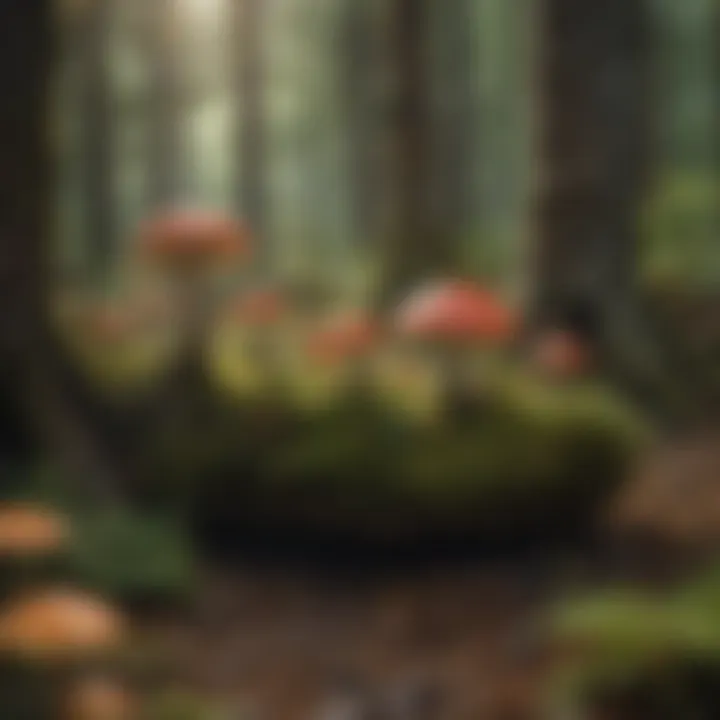
"Knowledge is the best antidote to danger in the wild, and mushroomforaging is no exception."
Considering these traits while foraging can save lives; thus, it's imperative to remember that expertise in identifying mushrooms cannot be rushed.
As Washington State continues to be a hotspot for mushroom enthusiasts and foragers alike, a mindful approach to mushroom identification ensures a robust understanding of both the edible and poisonous varieties.
Common Poisonous Mushrooms in Washington State
Understanding the varieties of common poisonous mushrooms in Washington State is crucial for anyone venturing into its lush forests. Each species not only possesses characteristics making them hazardous but also plays a significant role in the ecosystem. To navigate these woods safely, one must be aware of these toxic fungi and their implications on both human health and the natural world.
Though the potential danger of poisonous mushrooms is widely recognized, professionals and amateurs alike often underestimate their prevalence and diversity. From harmful effects on health to ecological impacts, the study of these fungi provides insight into the complex relationships within forests.
Amanita phalloides (Death Cap)
Amanita phalloides, or commonly known as the Death Cap, is notorious for being one of the most lethal mushrooms worldwide. Its appearance can deceive the untrained eye, with its greenish-yellow cap that resembles edible species. This mushroom typically grows in dry and moist woodlands, often near oak and pine trees. Key features include:
- Smooth cap with a sheen; can range from yellow to olive green.
- White gills that do not attach to the stem.
- A bulbous base usually concealed underground.
The potency of the Death Cap is due to the presence of alpha-amanitin, a toxin that inhibits RNA polymerase II, disrupting protein synthesis. Symptoms may take hours or even days to manifest, often leading to severe liver and kidney damage. Knowing this mushroom's risks is vital for any outdoor enthusiast.
Amanita muscaria (Fly Agaric)
Amanita muscaria, more commonly known as the Fly Agaric, is easily recognizable by its bright red cap speckled with white dots. This mushroom is not as deadly as the Death Cap, but it can lead to serious health issues if ingested. It often has a whimsical look that draws attention but should be avoided.
- Typically found in forested areas, especially beneath coniferous trees.
- Known for its psychoactive properties due to compounds like muscimol.
While some cultures historically used the Fly Agaric for its hallucinogenic effects, consuming it without adequate knowledge can result in confusion, seizures, and even coma. Its toxicological profile makes this mushroom a prime candidate for caution among foragers.
Glycyrrhiza glabra (Fool's Mushroom)
The Fool's Mushroom, or Glycyrrhiza glabra, shares a resemblance to certain edible mushrooms, often leading to its unfortunate nickname. Its cap is typically brown or gray, blending well with the forest floor, which may confuse inexperienced foragers. It has distinct features that can include:
- A smooth, sticky cap that becomes darker with age.
- Gills that appear free from the stem often become yellowish as they mature.
Consuming the Fool's Mushroom can cause gastrointestinal discomfort, but more severe effects may include complications that require medical attention. Awareness is essential to prevent accidental ingestion of this unassuming mushroom.
Inocybe spp. (Fiber Caps)
Inocybe species, often referred to as Fiber Caps, encompass a variety of mushrooms notorious for their variability and toxicity. They are typically found in woods and grassy areas, and many have a resemblance to non-toxic varieties, leading to potential forager confusion. Key indicators of Inocybe mushrooms are:
- A conical to bell-shaped cap that ranges in color from brown to yellow.
- Fibrous texture may be evident when examining the stem.
Notably, many Inocybe species contain muscarine, a potent toxin that can lead to excessive salivation, sweating, and respiratory distress. A thorough understanding of these mushrooms is crucial for mushroom hunters, highlighting the importance of proper education in foraging activities.
"Understanding these mushrooms goes beyond just to prevention of poisoning; it’s a window into the delicate balance of forest ecosystems."
This examination of common poisonous mushrooms in Washington State underscores the necessity of gaining knowledge about their traits and risks associated with encountering them in the wild. Each type not only affects individual health but also has ecological implications that should not be overlooked.
Ecological Roles of Poisonous Mushrooms
Poisonous mushrooms, often perceived merely as hazards in the wilderness, actually play significant roles in their ecosystems. Understanding these roles not only deepens our appreciation for these organisms but also emphasizes their complex interrelationships within the natural world. In Washington State, where our forests teem with diverse fungal species, examining the ecological functions of these toxic varieties can offer insight into their importance beyond their harmful effects.
Fungi in Ecosystems
Fungi, including poisonous mushrooms, are foundational to ecosystem health. They are not just incidental organisms; they're vital players in nutrient cycles, decomposition, and even plant health. Here are some critical aspects of how they contribute:
- Decomposers: Poisonous mushrooms assist in breaking down organic matter. As they decay plant material, they release vital nutrients back into the soil, supporting plant growth and maintaining soil health.
- Symbiosis and Mycorrhizal Relationships: Many toxic species have symbiotic relationships with plants. For example, the mycorrhizal fungi form partnerships with tree roots, aiding in nutrient absorption. Even poisonous varieties can contribute to this process, helping sustain larger forest systems.
- Biodiversity Support: The diversity of fungi, including poisonous types, supports a wide range of wildlife. Animals, particularly insects, have evolved specific relationships with these mushrooms, contributing to the ecosystem's overall balance.
- Food Web Dynamics: While toxic mushrooms can be deadly to humans, they often play a role in food webs. Certain wildlife species have adapted to consume poisonous fungi without suffering harm. For example, some rodents can eat Amanita muscaria without adverse effects, meaning these mushrooms can sustain populations of specific animals, aiding in forest health and species diversity.
In Washington State, the functions of poisonous mushrooms serve as a reminder of the interconnectedness of life forms. Each mushroom, regardless of its toxicity, has carved out a niche, illustrating how life adapts and thrives even in potentially hazardous circumstances. As we learn more about these species and their ecological roles, we can foster a nuanced understanding which goes beyond mere safety concerns.
"In the vast theatre of ecosystems, every organism performs a role, and even the most dangerous players can contribute to life's intricate dance."
Gaining insight into these ecological roles helps emphasize the importance of responsible foraging practices and conservation efforts. When individuals appreciate the value of these mushrooms, it may encourage better stewardship of Washington's unique and diverse forest environments.
Health Risks Associated with Poisonous Mushrooms
Understanding the health risks associated with poisonous mushrooms is crucial for anyone venturing into Washington's diverse forests. While mushrooms can be a delightful addition to a meal, their toxic varieties can lead to severe consequences, not just for seasoned foragers, but for casual hikers as well. The stakes are high; mushroom poisoning can range from mild gastrointestinal upset to life-threatening liver failure. Therefore, having a solid grasp of the risks can mean the difference between a safe outing and a medical emergency.
Poisonous mushrooms can cause varying symptoms depending on the species, amount ingested, and the individual’s health status. Awareness is the first step in preventing mushroom-related illnesses. By understanding the symptoms and potential long-term effects of mushroom poisoning, individuals can respond promptly and adequately if exposure occurs. This knowledge contributes not just to personal safety, but also enriches the discussions around conservation and safe foraging practices in a community.
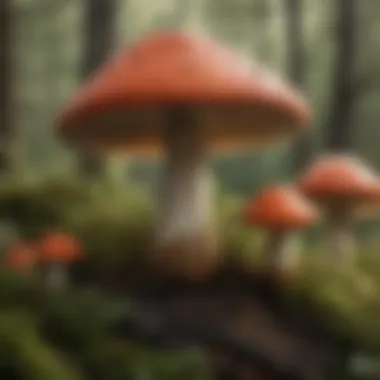
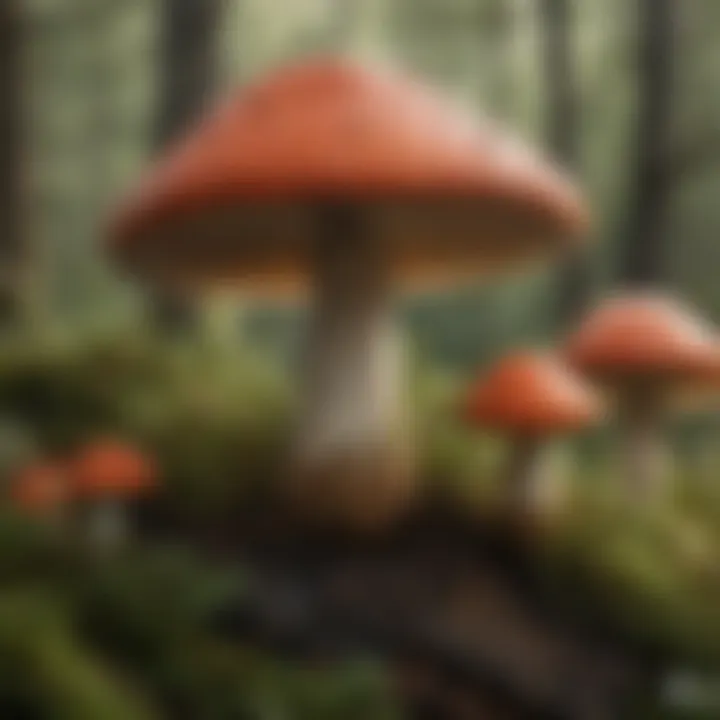
Symptoms of Mushroom Poisoning
Poisoning usually manifests two distinct ways, depending on the type of toxin involved. Some mushrooms, such as the Amanita phalloides, can first lull you into a false sense of security with initial mild symptoms that may dissipate within hours. This can lead to dangerous underestimating of the situation, as the real peril might lurk just beneath the surface, appearing later with a vengeance.
Common symptoms of mushroom poisoning include:
- Nausea and vomiting: Often the body’s first reaction to a toxin, they can show up within a few hours, or sometimes a day later.
- Abdominal pain: Cramping or sharp pain can indicate gastrointestinal distress.
- Dizziness and confusion: These can be signs of a more severe reaction or neurological impact.
- Skin reactions: Rashes or hives may surface as your body reacts allergically to the toxin.
- Liver or kidney issues: These may present later, but can be life-threatening and debilitating.
"Identifying symptoms early can save your life. Don’t play the guessing game; know the signs, understand the risks."
It’s worth noting that not all symptoms follow a specific timeline; some may emerge quickly while others may take days to show. It’s a real mixed bag, which makes it all the more crucial to seek medical attention promptly if suspected related to mushroom consumption.
Long-Term Effects and Recovery
Recovery from mushroom poisoning can be a convoluted process. Factors such as the type of mushroom involved, the amount ingested, and the promptness of medical treatment contribute heavily to the prognosis.
For many, long-term effects are not an immediate concern; symptoms can often be treated effectively with proper medical care. Nonetheless, a few specific points merit attention:
- Liver and kidney damage: Certain poisonous mushrooms can inflict lasting harm. If the liver suffers significant damage, individuals might face long-term health struggles, including the potential for transplants.
- Psychological consequences: Going through a traumatic poisoning experience can leave mental scars. Some individuals may develop allergies even after recovery or experience anxiety related to future foraging.
- Nutritional deficiency: If digestive functions are hindered, subsequent nutritional shortcomings could persist, necessitating dietary adjustments post-recovery.
For people who have suffered from mushroom poisoning, a comprehensive follow-up plan is vital. This may include nutritional guidance, psychological counseling, and regular health check-ups to monitor any lingering issues. Informed recovery tailored to the unique aftermath of the poisoning can significantly improve outcomes and quality of life going forward.
As we navigate the wilds of Washington State, understanding the nuances of each mushroom and its potential ramifications is an investment in our safety and health.
Guidelines for Safe Foraging
When engaging in amateur mushroom foraging, the stakes can be considerable, especially in a state like Washington, where the diversity of fungal life can be overwhelming. Understanding the nuances of mushroom foraging not only enhances one’s experience in the great outdoors but also significantly reduces the risks associated with consuming poisonous varieties. These guidelines delineate critical steps for foragers to ensure their safety while exploring the rich and often perplexing world of mushrooms.
Educating Oneself on Local Species
The first step in safe foraging is education. Familiarizing oneself with the various species that inhabit the region is paramount. Washington boasts diverse habitats, from temperate rainforests to arid plains—each hosting its own unique mushrooms. Mycologists often emphasize the importance of observing local ecosystems closely.
In addition to field studies, reading local guides and research papers can provide depth on mushroom characteristics. Many species look similar, so distinguishing between the edible and the toxic becomes crucial. For example, the edible Chanterelle has a much different spore print than its toxic lookalikes, which may lead foragers astray. Here are some tips:
- Join local workshops: Community colleges and nature groups often offer mycology classes.
- Engage with seasoned foragers: Learning from experienced individuals can help avoid common pitfalls.
- Document your findings: Keeping a journal with sketches and notes aids memorization and quick identification later.
Utilizing Field Guides and Resources
Once you've laid the groundwork of knowledge, it's essential to have the right resources close at hand. Specific field guides tailored to Washington's mushrooms can greatly enhance foraging safety and efficacy. These guides often contain detailed images alongside descriptions providing a visual aid, helping to navigate the complexities of mushroom identification more effectively.
Online forums, such as Reddit’s mushroom communities, can be invaluable. The sharing of experiences and identification tips from fellow foragers fosters a rich learning environment. Some noteworthy resources include:
- Books: "Mushrooms of the Pacific Northwest" by Steve Trudell and Joe Ammirati is a staple.
- Websites: Platforms like Wikipedia have extensive databases on various species and safety protocols.
- Mobile Apps: Various applications can assist in identification, typically employing image recognition technology.
"The best way to learn about mushrooms is not just to read about them, but to get out there and see them in their natural habitat. Hands-on experience is irreplaceable."
Expert Opinions and Research on Mushrooms
Understanding the landscape of poisonous mushrooms in Washington State hinges on expert opinions and rigorous research. These insights shed light not only on the identification of toxic species but also on their ecological significance and the health risks they pose. Connecting with mycologists and mycological societies can provide invaluable knowledge that will aid both amateur foragers and seasoned forestry professionals.
Interviews with Mycologists
When it comes to mushrooms, there's a wealth of information buried within the minds of mycologists. These specialists dedicate their lives to studying fungi, exploring everything from taxonomy to toxicology. To get a clearer picture of poisonous mushrooms in Washington, we can turn to their extensive expertise.
Interviews with mycologists often reveal intriguing insights:
- Species-Specific Knowledge: Many mycologists can identify species that may not even be mentioned in foraging guides. Details like spore print color or microscopic features can be the difference between a safe foraging trip and a poison emergency.
- Real-World Case Studies: They frequently share accounts of mushroom poisoning cases. Understanding these scenarios can dramatically increase community awareness and promote safety practices amongst foragers.
- Cultural Perspectives: Mycologists often touch upon how various cultures perceive mushrooms, sometimes viewing them as sacred or essential, while others regard them as strictly dangerous. This broad perspective is crucial in a region as diverse as Washington, where traditions differ.
"One must always maintain a healthy respect for wild mushrooms. The allure of foraging can blind people to the real dangers lurking beneath the forest floor." — Dr. Lisa Huang, Mycologist.
- Environmental Effects: Through their research, mycologists contribute to understanding how ecological changes—like climate change or habitat destruction—affect mushroom populations, including poisonous varieties. Changes in temperature and humidity could shift the presence of toxic species or alter their toxicity levels.
- Public Education: Many mycologists spend time teaching workshops and foraging classes. Such initiatives are paramount in enhancing knowledge about poisonous mushrooms, thus equipping foragers with the tools to safely enjoy the rich biodiversity of Washington.
Mycology research progresses at a steady pace, keen on uncovering the mysteries baked within the earth. Collaboration with universities, field studies, and ecological surveys provide a continual flow of information that keeps both the scientific community and public engaged and informed.
In synthesizing these detailed insights, we realize that understanding poisonous mushrooms requires a blend of empirical research and collective knowledge. Being aware of the latest findings not only fosters a greater respect for these organisms in our ecosystems but also reinforces responsible foraging habits. By harnessing the power of expert opinions and ongoing research, we can better navigate the complexities of mushroom foraging in Washington State.
Cultural Perspectives on Poisonous Mushrooms
The cultural significance of mushrooms, particularly the poisonous varieties, cannot be understated. Throughout history and across various societies, mushrooms have held both awe and fear in equal measure. The narratives that surround these fungi often reflect deeper human experiences related to nature, survival, and caution. In Washington State, where forests teem with diverse fungi, understanding these cultural perspectives adds another layer to our knowledge of poisonous mushrooms.
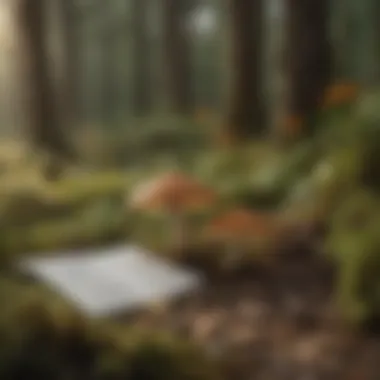
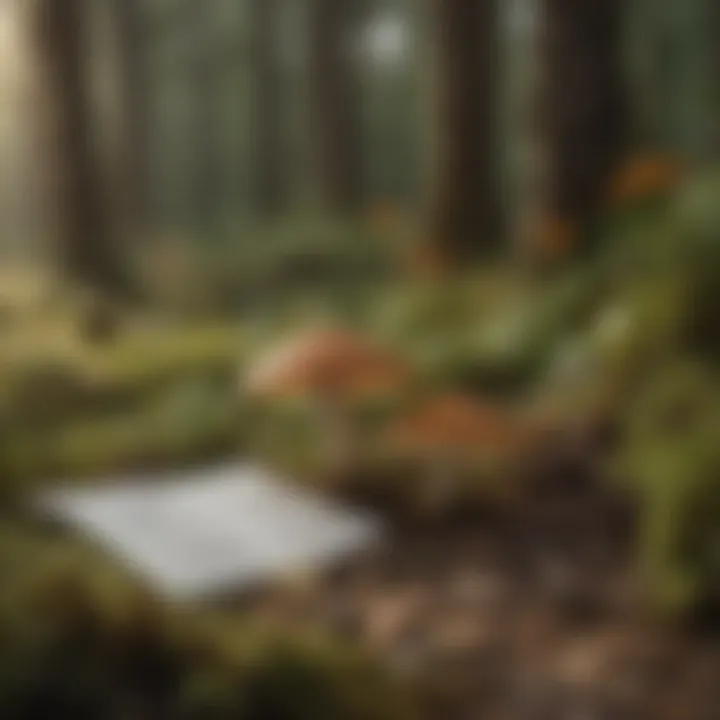
Mushrooms have a rich tapestry of symbolism and folklore. They are often seen as gatekeepers to the mystical, bridging the known and unknown. For example, numerous cultures view mushrooms as medicinal, while others as ominous, altering perceptions about safety in foraging. This dichotomy shapes how communities interact with their natural surroundings.
An element worth exploring is how many indigenous cultures treat mushrooms as an integral part of their heritage. Fungi sometimes figure prominently in their legends, symbolizing resilience and regeneration. They teach caution to the untrained eye, instilling a respect for signs and markings in nature. This form of storytelling not only passes down wisdom about safe foraging practices but also reinforces community identity. Understanding these perspectives can enhance our comprehension of ecological relationships in the area.
Additionally, mushrooms appear regularly in art, literature, and cuisine, mirroring diverse attitudes towards them. From being a delicacy on fine dining menus to embodying treachery in folklore, their duality is notable. Cultural myths regarding mushrooms often serve as metaphors for broader concepts, such as life and death or caution and curiosity.
"Mushrooms can teach us about our environments; they can also remind us of our limits and the perilous beauty of nature."
Folklore and Myths Surrounding Mushrooms
In the realm of folklore, mushrooms frequently become tragic figures, representing the unpredictable aspects of nature. Stories of enchanted forests are replete with mysterious mushrooms, often portraying these fungi as gateways to other worlds. Conversely, many tales use poisonous mushrooms to warn people—such as the well-known cautionary tales surrounding the Death Cap.
Common myths in various cultures often cite mushrooms as the cause of unfortunate outcomes after indulgence. These narratives could stem from genuine encounters with poisonings but often exaggerate, embedding fear around foraging. The rise of social media has further added to this mixture, with some myths gaining ground through shared wisdom, which may not always be accurate.
Some prevalent myths include:
- The Fly Agaric as a Magical Mushroom: Often depicted in children's stories, this red-capped mushroom is said to produce magical effects, though it can be toxic.
- The Cautionary Tale of the Death Cap: Many warnings focus on this mushroom, underscoring the importance of proper identification before consumption.
- Stroganoff Delight: A common belief that all mushrooms, particularly certain wild ones, can be safely eaten when cooked in popular dishes, which is misleading.
Engaging with these cultural narratives allows for a deeper appreciation of mushrooms beyond their ecological roles. They evoke conversations about education and awareness, highlighting the need for informed foraging practices.
Moreover, through understanding and appreciating these cultural perspectives, we have a chance to bridge gaps in knowledge and dissemination of information about mushroom toxicity and safety. Fostering discussions about folklore offers opportunities to blend caution with education, potentially leading to better outcomes in foraging and community interactions with the natural world.
Ultimately, it's clear that cultural aspects influence our relationship with poisonous mushrooms in profound ways. Recognizing these influences can enhance our approach to safely navigating the rich fungal landscape found in Washington State.
Regional Variations in Mushroom Toxicity
When it comes to mushrooms, not all are created equal, and the realm of toxicity is no exception. Understanding regional variations in mushroom toxicity is not just an academic exercise; it holds practical significance for foragers, environmental enthusiasts, and researchers alike. The diverse ecological landscapes throughout Washington State contribute to differences in fungal species and their toxicological profiles, making it crucial to grasp these variations for safe mushroom hunting.
Washington's rich tapestry of topography, from coastal regions to mountainous terrains, promotes an extensive variety of mushroom species. Each region supports its unique blend of flora and fauna, which in turn affects the type of mushrooms that flourish there. For instance, the moist temperate rainforests of the Olympic Peninsula contrast sharply with the drier landscapes found in Eastern Washington, resulting in notable discrepancies in mushroom habitats and toxicity levels.
Furthermore, certain mushrooms that may be harmless in one state can possess lethal properties in another. This is often attributed to local soil chemistry, weather patterns, and the specific plant life surrounding them. As an example, the Death Cap mushroom (Amanita phalloides), infamous for its deadly toxins, can be found across different regions. However, the concentration of its harmful compounds can vary based on local ecological factors.
"Environmental factors play a significant role in mushroom toxicity, from soil composition to climate variations. Understanding these can save lives."
Comparing States
The variations in mushroom toxicity are not confined to just Washington State; they can be observed across the entire country. Foraging enthusiasts should take note of some critical points when comparing states:
- Species Distribution: Some areas have a higher prevalence of certain toxic mushrooms. For example, Oregon has seen an uptick in cases involving Cortinarius species, which can cause severe renal failure.
- Seasonal Factors: Climate conditions can influence fungi growth. For instance, the wet conditions in Washington promote rapid mushroom growth in spring and fall, whereas California might yield mushrooms earlier due to its warmer climate. Seasonal differences can also affect toxicity, as ripe mushrooms might have higher toxin levels than immature ones.
- Wildlife Interactions: Local fauna also affects mushroom toxicity. Some animals build up immunities to specific toxins, which might lead to unexpected mushroom interactions within state ecosystems. The Eastern Grey Squirrel, for instance, has been known to consume some toxic species without apparent harm, but these could still pose a danger to humans.
Being aware of these regional nuances ensures foragers are well-informed about the mushrooms they encounter. By focusing on local insights, educators and experts can bolster public knowledge and foster a healthier interaction with Washington's mushroom-rich environments, ensuring safety and appreciation for the complex ecological relationships at play.
Future of Mushroom Research in Washington
The exploration of mushroom research is not just a niche interest; it plays a crucial role in understanding our ecosystem and public health. In Washington, home to a rich diversity of fungi, future research endeavors can lead to breakthroughs in knowledge about ecological interactions, bioremediation, and even pharmacological applications. The significance of advanced studies in mycology extends beyond mere academic curiosity; it intertwines with critical environmental conservation efforts and community health initiatives. Exploring this topic reveals specific elements that can benefit both scientific inquiry and practical applications in foraging.
Trends in Mycology Studies
Recent years have seen a noticeable shift in the focus of mycological studies. More researchers are turning their attention to the symbiotic relationships fungi have with other organisms. This includes how mushrooms can aid in nutrient cycling within forests, a crucial factor for maintaining healthy ecosystems. Moreover, there has been a growing interest in citizen science projects where non-professionals contribute to data collection, making mushroom identification more accessible.
This democratization of mycology offers a wider array of data, enriching our collective understanding. Couple this with increasing technological advances, like DNA barcoding, researchers can distinguish species in ways that were once challenging. This leads us to a more refined classification system which is paramount for accurately identifying poisonous mushrooms in Washington.
Advancements in Toxicology
The field of toxicology as it pertains to mushrooms is evolving at a remarkable pace. Recent advancements have focused on understanding specific chemical compounds present in mushrooms, particularly those known to be toxic. This research often emphasizes identifying the mechanisms through which these toxins affect human physiology. Researchers are also beginning to look into novel antidotes for mushroom poisoning, a game-changer for emergency medical responses. Consider the progress made in tracking how toxins are metabolized in the body, potentially allowing for better diagnostic tools in clinical settings. Such advancements not only address immediate health risks but also contribute to educational efforts for safe foraging practices.
"An informed forager is an empowered forager; knowledge is the best safeguard against the dangers of poisonous mushrooms."
Epilogue
When wrapping up the discussion around poisonous mushrooms in Washington State, it’s crucial to underline the multifaceted importance of understanding these fungi. Recognizing not just the potential dangers, but also their ecological significance, is vital for anyone venturing into the state's rich forested areas. A well-rounded perspective emphasizes the balance between appreciating nature while also respecting its perilous aspects.
Recap of Key Points
- Recognition of Dangerous Varieties: A thorough understanding of mushroom species, particularly those that are toxic, equips individuals with the knowledge needed to navigate the outdoors safely.
- Ecological Importance: Poisonous mushrooms play critical roles in their ecosystems, contributing to nutrient cycling and the overall health of forest habitats. Their complex interactions connect them intrinsically to both flora and fauna.
- Health Risks: Awareness of symptoms related to mushroom poisoning can be lifesaving. Knowing what to look for can help mitigate risks associated with accidental ingestion.
- Safe Foraging Practices: Engaging in responsible foraging requires an education on local mushroom varieties and utilizing reliable field guides. This not only promotes safety but also enhances the experience of connecting with nature.
The Importance of Awareness
Awareness is not just an idle concept; it’s a necessary approach for anyone involved with nature, especially those who hike or forage in the woods.
The potential health risks linked with poisonous mushrooms cannot be overstated. Research shows that many cases of mushroom poisoning stem from misidentification. In Washington, the variety of fungi can be overwhelming, making it crucial for enthusiasts and casual foragers alike to understand the toxic varieties that lurk among the edible ones.
Furthermore, fostering an attitude of awareness goes beyond just individual safety. It cultivates a deeper respect for wildlife and ecosystems. This mindfulness encourages better stewardship of the environment, leading to more informed interactions with nature and a commitment to protecting the delicate balance within our ecosystems.
"Education and awareness are the keys to both enjoyment and safety in the wild."
Thus, being aware not only sparks appreciation but also helps prevent potentially fatal encounters. In summary, the significance of being educated about poisonous mushrooms stretches far and wide, merging personal safety with ecological understanding.



